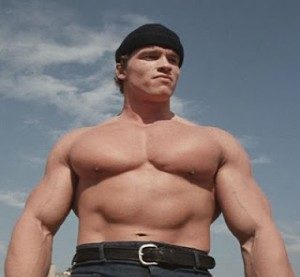Muscular growth, also known as hypertrophy, is influenced by several factors. Here are just a few.
Training Factors
Volume: the number of sets and repetitions you do in a given workout (and routine) is one of the most important training variables. Higher training volume can help you grow muscle provided you are getting adequate rest and recovery after your lifting.
Intensity: training intensity refers to maximizing the stimulation a muscle receives, often in a short period of time. Lifting a heavier weight, for example, means the muscle is getting a more intensive “signal” with fewer repetitions. Other techniques to maximize intensity would be super-sets in which the same muscle is worked in two (or more) consecutive exercises with minimal rest.
Tension: is another factor that affects muscle growth, and time under tension is a term often used in relation to this. This particular aspect of muscle growth is seldom understood because heavier weights are not always necessary to produce greater gains. A lighter weight can be used to create great tension on a muscle. One example would be the well-developed physiques of gymnasts who primarily train with only their own body weight.
Muscular Damage/Stress: Most believe that lifting weights creates microscopic damage that muscle cells repair over time. This damage/stress at the cellular level produces increases of muscle size and strength.
Dietary Factors
Diet and nutrition cannot be neglected for those who are serious  about putting on muscle.
about putting on muscle.
Here are the major nutrients (macronutrients) to consider:
Protein: Strength athletes have known for decades that they need more protein than sedentary individuals, and the “recommended daily allowance” proposed by the government is probably not what you should be going by if you want to put on muscle. Most bodybuilders consume one gram of protein for each pound of body mass. This is plenty and you don’t need any more than this. The one exception is when you are dieting–then it may be a good idea to go a little higher.
Carbohydrates and Fats: both of these provide the body with the necessary energy to train. You can also get your energy from protein, but converting protein to cellular energy is an inefficient process. The amount of carbs and fats you should eat kind of depends on you: some people have an easier time keeping their energy up with more carbs. But some find that they put on too much fat with amble carb intake so they try to get more of their calories from fat/protein.
Now that we’ve covered protein, carbs, and fats, remember this: you will need to eat more calories than you are using if you want to build muscle. The opposite is true for fat loss: you’ll have to eat less calories than you are using. There’s simply no way around this basic law of “calories in, calories out.”
Now that you have this information I can recommend some resources for those who want to really get into the details.
You may be interested in creating more of a “fitness model” type body that just looks good on the beach. If that’s the case you may want to learn more about the Adonis Golden Ratio System.
But you may be a skinny guy who really wants to gain weight. If that’s the case you may want to check out Vince Delmonte’s No Nonsense Muscle Building 2.0. This is an excellent program for beginners.
Hopefully this information was helpful. Train hard!